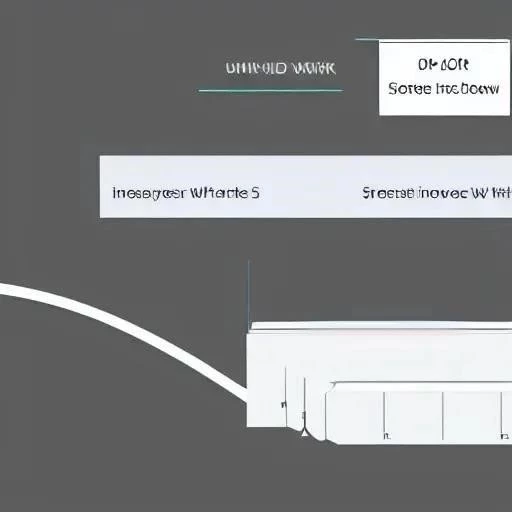The world of networking hardware is constantly evolving‚ and with it‚ new approaches to infrastructure management are emerging. One such approach gaining traction is the concept of a Cisco White Box solution. But what exactly is a Cisco White Box‚ and why is it becoming a popular choice for businesses? Unlike traditional networking devices that come bundled with proprietary hardware and software from a single vendor‚ a Cisco White Box offers a disaggregated model‚ separating the hardware from the operating system. This separation allows organizations greater flexibility‚ control‚ and potential cost savings by choosing hardware and software independently‚ creating a tailored solution to meet their specific needs.
Understanding the Cisco White Box Concept
At its core‚ a Cisco White Box refers to a networking device‚ often a switch or router‚ built using commercially available‚ off-the-shelf (COTS) hardware. Think of it like building your own computer: you choose the components (CPU‚ RAM‚ hard drive) and then install the operating system you prefer. With a Cisco White Box‚ you select the hardware from a vendor and then install a network operating system (NOS) of your choice‚ which could be from Cisco or another provider. This disaggregation offers several potential advantages.
Benefits of Cisco White Box Solutions
- Increased Flexibility: Choose the best hardware and software components independently‚ tailoring your network to specific needs.
- Reduced Vendor Lock-in: Avoid being tied to a single vendor for all your networking needs.
- Cost Savings: Potentially lower capital expenditure (CAPEX) and operational expenditure (OPEX) by optimizing hardware and software choices.
- Innovation and Agility: Faster adoption of new technologies and features by decoupling hardware and software lifecycles.
- Customization: Tailor the NOS to meet specific application requirements and network configurations.
Key Considerations When Deploying Cisco White Box
While Cisco White Box solutions offer numerous benefits‚ it’s crucial to consider certain factors before deployment. Compatibility between hardware and software is paramount. Thorough testing and validation are essential to ensure seamless integration and optimal performance; Support and maintenance also become critical; you need to determine who will provide support for the hardware and the NOS. Furthermore‚ internal expertise or partnerships with experienced integrators are often necessary to manage the disaggregated environment effectively. This approach might require a shift in skillset within your IT department.
The selection of a suitable NOS is critical. While Cisco provides its own NOS options that can be run on White Box hardware‚ other third-party options exist‚ each with varying features‚ capabilities‚ and support levels. Careful evaluation is needed to determine the best NOS for your specific use case.
FAQ ─ Frequently Asked Questions about Cisco White Box
What is the difference between a Cisco White Box and a traditional Cisco switch?
A traditional Cisco switch is a fully integrated solution with proprietary hardware and software from Cisco. A Cisco White Box uses commodity hardware with a separate NOS‚ which can be from Cisco or another vendor.
Are Cisco White Boxes more difficult to manage?
Potentially. They require a different approach to management and support compared to traditional switches due to the disaggregated nature of the solution. Expertise in both hardware and the chosen NOS is necessary.
What are some common use cases for Cisco White Box solutions?
Common use cases include data centers‚ cloud environments‚ and large enterprise networks where flexibility‚ cost optimization‚ and vendor independence are critical.
Is Cisco White Box right for my organization?
That depends on your specific needs and resources. If you require greater flexibility‚ control‚ and cost savings‚ and have the expertise to manage a disaggregated environment‚ then a Cisco White Box solution may be a good fit.
Ultimately‚ understanding the nuances of Cisco White Box solutions is key to making an informed decision. They represent a significant shift in networking architecture‚ offering both exciting opportunities and potential challenges.
The Future of Networking with Cisco White Box
The adoption of Cisco White Box solutions is poised to grow as organizations increasingly prioritize agility and cost-effectiveness in their networking infrastructure. The trend towards disaggregation allows for greater innovation and faster adoption of new technologies. As the ecosystem of compatible hardware and software expands‚ and as management tools become more sophisticated‚ the barriers to entry for Cisco White Box deployments will continue to diminish.
The impact of White Box solutions extends beyond just hardware and software choices. It also influences the way networks are designed‚ deployed‚ and managed. The shift towards software-defined networking (SDN) and network function virtualization (NFV) further accelerates the adoption of White Box solutions‚ as these technologies rely on the ability to abstract network functions from the underlying hardware. This abstraction enables organizations to automate network provisioning‚ scale resources dynamically‚ and optimize network performance.
Challenges and Mitigation Strategies
Despite the potential benefits‚ organizations should be aware of the challenges associated with Cisco White Box deployments. These challenges include:
- Integration Complexity: Ensuring seamless integration between hardware and software requires careful planning and testing. Mitigation strategies include thorough testing‚ validation‚ and the use of certified hardware and software combinations.
- Support and Maintenance: Establishing clear lines of support for both hardware and software is crucial. Mitigation strategies include partnering with experienced integrators or developing internal expertise.
- Security Considerations: Securing a disaggregated environment requires a comprehensive security strategy. Mitigation strategies include implementing robust access controls‚ intrusion detection systems‚ and regular security audits.
Comparative Table: Traditional Cisco vs. Cisco White Box
| Feature | Traditional Cisco | Cisco White Box |
|---|---|---|
| Hardware and Software | Fully Integrated | Disaggregated |
| Vendor Lock-in | High | Low |
| Flexibility | Limited | High |
| Cost | Potentially Higher | Potentially Lower |
| Management Complexity | Lower | Potentially Higher |
Evolving Ecosystem of Cisco White Box Solutions
The Cisco White Box ecosystem is constantly evolving‚ with new hardware platforms‚ NOS options‚ and management tools emerging regularly. This rapid pace of innovation can be both exciting and challenging for organizations considering White Box deployments. Staying informed about the latest developments and trends is essential for making informed decisions and maximizing the benefits of this technology.
One key trend is the increasing availability of pre-validated and certified hardware and software combinations. This simplifies the integration process and reduces the risk of compatibility issues. Cisco and other vendors are actively working to create a more mature and standardized ecosystem for White Box solutions.
Another important trend is the development of more sophisticated management tools. These tools aim to simplify the management of disaggregated environments and provide greater visibility into network performance. Features such as automated provisioning‚ centralized monitoring‚ and policy-based management are becoming increasingly common.
The Future of Cisco White Box: Considerations and Predictions
Looking ahead‚ several key factors will shape the future of Cisco White Box solutions. The continued growth of cloud computing and the increasing demand for network agility will drive further adoption of disaggregated architectures. The development of more open and standardized APIs will facilitate integration with other network management systems.
One potential area of innovation is the integration of artificial intelligence (AI) and machine learning (ML) into White Box management tools. AI and ML can be used to automate network optimization‚ predict potential problems‚ and improve security posture. The impact of Cisco White Box solutions will be profound.
Despite the promising outlook‚ challenges remain. The skills gap in networking remains a significant obstacle. Organizations need to invest in training and development to ensure that their IT staff have the expertise to manage a disaggregated environment effectively. Another challenge is the need for greater standardization in the White Box ecosystem. A lack of standardization can lead to interoperability issues and increased complexity.
Predictions for the Future
- Increased Adoption: Cisco White Box solutions will become more mainstream as organizations seek greater agility and cost savings.
- Ecosystem Maturity: The White Box ecosystem will become more mature and standardized‚ with a wider range of validated hardware and software options.
- AI-Powered Management: AI and ML will play an increasingly important role in managing White Box networks.
- Skills Development: Organizations will invest in training and development to build the skills needed to manage disaggregated environments.
and lists‚ where appropriate.
FAQ: Cisco White Box
- What are the primary benefits of using Cisco White Box solutions?
- The main advantages include increased flexibility‚ reduced vendor lock-in‚ and potentially lower costs. Organizations gain the ability to choose best-of-breed hardware and software components‚ customize their network infrastructure to meet specific needs‚ and avoid being tied to a single vendor’s ecosystem.
- What are the potential drawbacks of Cisco White Box deployments?
- Challenges can include integration complexity‚ the need for specialized expertise‚ and the potential for increased management overhead. Careful planning‚ thorough testing‚ and the right skill set are essential for successful deployments.
- Is Cisco White Box suitable for all types of organizations?
- Cisco White Box solutions are most suitable for organizations with a strong understanding of networking technologies and a desire for greater control over their infrastructure. Organizations with limited IT resources may find traditional integrated solutions a better fit.
- How do I get started with Cisco White Box?
- Start by assessing your network requirements and identifying areas where a disaggregated approach could be beneficial. Research compatible hardware and software options‚ and consider partnering with an experienced integrator to help with design and deployment. A proof-of-concept deployment can help validate the technology and identify potential issues.
- What kind of support is available for Cisco White Box solutions?
- Support models vary depending on the specific hardware and software components used. Some vendors offer direct support for their products‚ while others rely on third-party integrators. It’s important to understand the support options available before making a purchasing decision.
Real-World Applications and Use Cases
The adoption of Cisco White Box solutions is expanding across various industries‚ driven by the need for more agile‚ cost-effective‚ and scalable network infrastructures. Let’s explore some real-world applications and use cases that demonstrate the value of this technology:
Data Centers
Data centers are at the forefront of Cisco White Box adoption‚ driven by the need for high-performance‚ low-latency networking. White Box switches and routers provide the flexibility and scalability required to support demanding workloads and applications. Organizations can optimize their data center networks for specific workloads‚ such as big data analytics‚ artificial intelligence‚ and machine learning.
- Improved Network Performance: White Box solutions enable organizations to optimize network performance by selecting hardware and software components tailored to specific workload requirements.
- Increased Scalability: Disaggregated architectures offer greater scalability‚ allowing organizations to easily scale their network infrastructure as their needs evolve.
- Reduced Costs: By avoiding vendor lock-in and leveraging open-source software‚ organizations can reduce their data center networking costs.
Service Providers
Service providers are also increasingly adopting Cisco White Box solutions to deliver innovative services and reduce costs. White Box switches and routers can be used to build software-defined networks (SDNs) that enable service providers to automate network provisioning‚ optimize network performance‚ and deliver new services more quickly.
- Faster Time-to-Market: SDNs based on White Box solutions enable service providers to accelerate the deployment of new services.
- Increased Service Agility: Software-defined networks provide greater flexibility and agility‚ allowing service providers to respond quickly to changing customer demands.
- Reduced Operational Costs: Automation and centralized management capabilities can significantly reduce operational costs.
Enterprise Networks
While data centers and service providers are the early adopters‚ enterprise networks are also beginning to explore the benefits of Cisco White Box solutions. As the technology matures and management tools become more user-friendly‚ enterprise organizations are increasingly considering White Box switches and routers for their campus and branch networks.
- Greater Network Control: White Box solutions provide enterprises with greater control over their network infrastructure.
- Improved Security: Organizations can implement customized security policies and access controls to protect their networks from threats.
- Reduced Capital Expenditures: By leveraging open-source software and disaggregated hardware‚ enterprises can reduce their capital expenditures on networking equipment.

